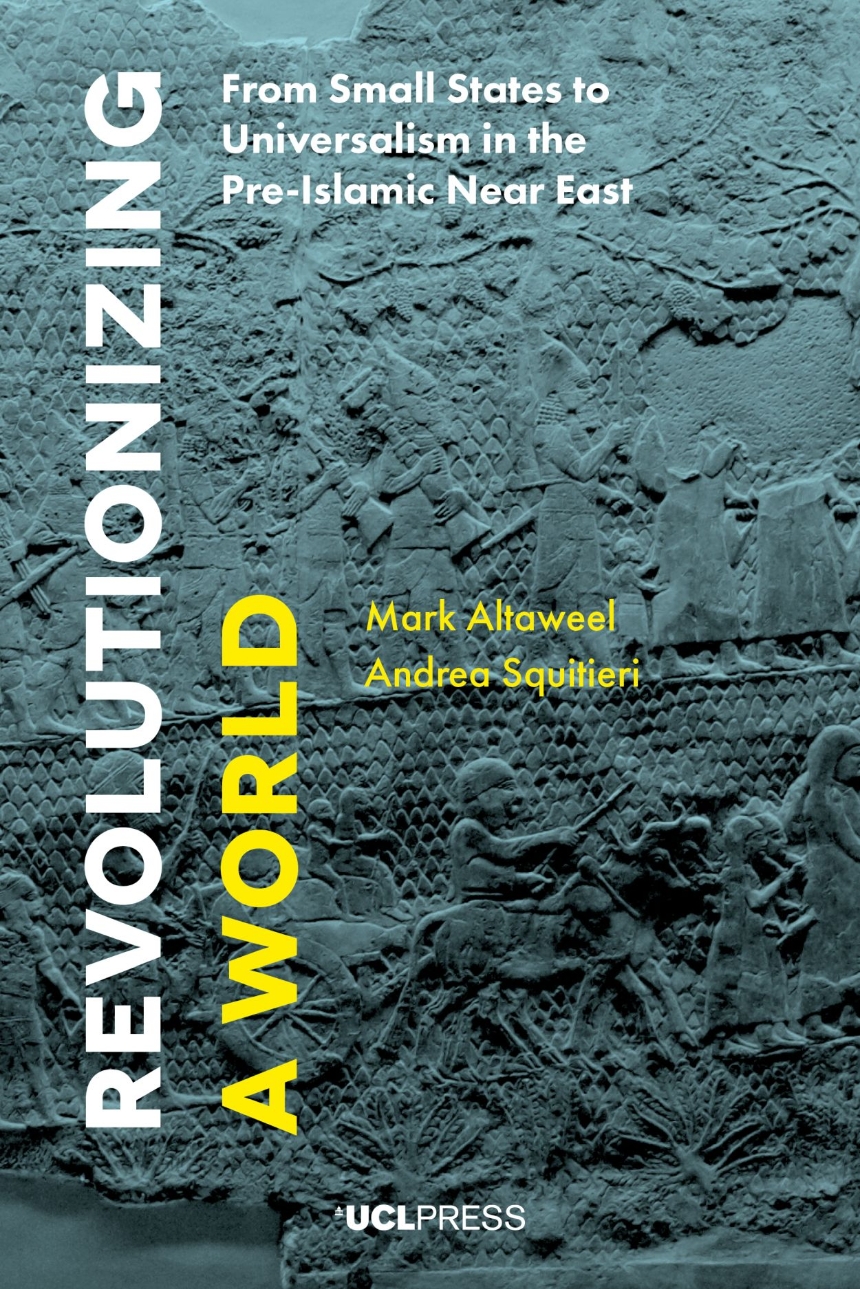9781911576648
9781911576655
Distributed for UCL Press
Revolutionizing a World
From Small States to Universalism in the Pre-Islamic Near East
This book investigates the long-term continuity of large-scale states and empires, and its effect on the Near East’s social fabric, including the fundamental changes that occurred to major social institutions. Its geographical coverage spans, from east to west, modern-day Libya and Egypt to Central Asia, and from north to south, Anatolia to southern Arabia, incorporating modern-day Oman and Yemen. Its temporal coverage spans from the late eighth century BCE to the seventh century CE during the rise of Islam and collapse of the Sasanian Empire.
The authors argue that the persistence of large states and empires starting in the eighth/seventh centuries BCE, which continued for many centuries, led to new sociopolitical structures and institutions emerging in the Near East. The primary processes that enabled this emergence were large-scale and long-distance movements, or population migrations. These patterns of social developments are analyzed under different aspects: settlement patterns, urban structure, material culture, trade, governance, language spread, and religion, all pointing at movement as the main catalyst for social change. This book’s argument is framed within a larger theoretical framework termed as "universalism," a theory that explains many of the social transformations that happened to societies in the Near East, starting from the Neo-Assyrian period and continuing for centuries. Among other influences, the effects of these transformations are today manifested in modern languages, concepts of government, universal religions and monetized and globalized economies.
The authors argue that the persistence of large states and empires starting in the eighth/seventh centuries BCE, which continued for many centuries, led to new sociopolitical structures and institutions emerging in the Near East. The primary processes that enabled this emergence were large-scale and long-distance movements, or population migrations. These patterns of social developments are analyzed under different aspects: settlement patterns, urban structure, material culture, trade, governance, language spread, and religion, all pointing at movement as the main catalyst for social change. This book’s argument is framed within a larger theoretical framework termed as "universalism," a theory that explains many of the social transformations that happened to societies in the Near East, starting from the Neo-Assyrian period and continuing for centuries. Among other influences, the effects of these transformations are today manifested in modern languages, concepts of government, universal religions and monetized and globalized economies.
336 pages | 93 illustrations | 6.14 x 9.21 | © 2018
Free digital open access editions are available to download from UCL Press.
History: Ancient and Classical History, Middle Eastern History
Table of Contents
"List of figures and tables
1. Introduction
2. Historical overview
3. Methods of analysis
4. Settlement patterns and spatial interaction
modelling
5. The changing nature of cities and other
settlements
6. Long-distance trade and economy before and
during the age of empires
7. Material culture hybridization
8. The development of universal governments
9. The spread of common languages
10. The rise of shared and universal religions
11. Characteristics of universalism
12. The impact of universalism
Appendix
References
Index"
1. Introduction
2. Historical overview
3. Methods of analysis
4. Settlement patterns and spatial interaction
modelling
5. The changing nature of cities and other
settlements
6. Long-distance trade and economy before and
during the age of empires
7. Material culture hybridization
8. The development of universal governments
9. The spread of common languages
10. The rise of shared and universal religions
11. Characteristics of universalism
12. The impact of universalism
Appendix
References
Index"

